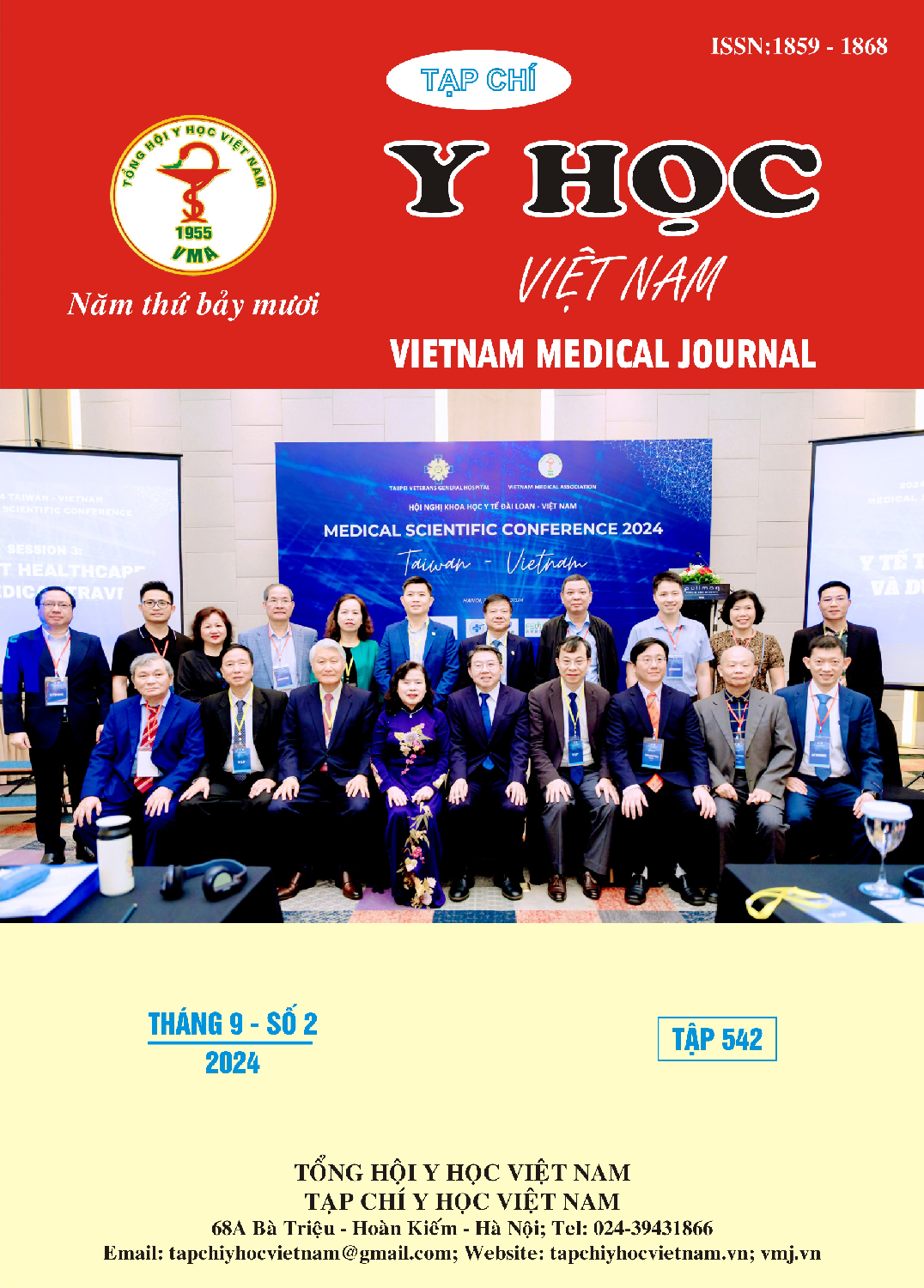SOME EPIDEMIOLOGY AND CLINICAL CHARACTERISTICS OF BODY PERFORMANCE DISORDERS IN ADOLESCENTS AT CENTRAL CHILDREN'S HOSPITAL
Main Article Content
Abstract
Objective: Describe the epidemiological and clinical characteristics of somatoform disorders at the Department of Adolescent Health - National Children's Hospital. Research subjects and methods: descriptive study on 54 patients diagnosed with somatoform disorders at the Department of Adolescent Health - National Children's Hospital. Results: In our study, the proportion of women was higher than that of men with a female/male ratio of 3.5/1. Regarding age, the first adolescent group accounts for the highest proportion with 87.04%. The average age of the patient group was 11.72 ± 1.53 years. Patients with extroverted personality account for 31.48%, patients with introverted personality account for 68.52%. Psychological trauma due to family and social relationships both accounts for 38.7%, psychological trauma due to learning accounts for 22.6%. Among the clinical forms of the disease, persistent somatoform pain disorder accounts for the highest rate with 59.3%, followed by somatization disorder group with 25.9%. Symptoms of the digestive system were the highest with 68.52% of cases and no case had symptoms of the genitourinary system. Conclusion: Body dysmorphic disorder mainly occurs in women, often in introverted patients. Somatoform pain disorder is the most common clinical form. Psychological factors are important causes related to the disease.
Article Details
Keywords
Epidemiology, clinical, somatoform disorders, adolescents.
References
2. Campo, J. V., Jansen-McWilliams, L., Comer, D. M., & Kelleher, K. J. (1999). Somatization in pediatric primary care: association with psychopathology, functional impairment, and use of services. Journal of the American Academy of Child & Adolescent Psychiatry, 38(9), 1093-1101.
3. Mullins, L. L., Olson, R. A., & Chaney, J. M. (1992). A social learning/family systems approach to the treatment of somatoform disorders in children and adolescents. Family Systems Medicine, 10(2), 201.
4. The ICD-10 Classification of Mental and Behavioural Disorders (2014). Clinical descriptions and diagnostic guidelines. World Health Organization, 125-126.
5. Malhotra S, Singh G, Mohan A (2005). Somatoform and dissociative disorders in children and adolescents: A comparative study. Indian J Psychiatry;47(1):39–43.
6. Lieb, R., Pfister, H., Mastaler, M., & Wittchen, H. U. (2000). Somatoform syndromes and disordersin a representative population sample of adolescents and young adults: prevalence, comorbidity and impairments. Acta Psychiatrica Scandinavica, 101(3), 194-208.
7. Reynolds, L. K., O'Koon, J. H., Papademetriou, E., Szczygiel, S., & Grant, K. E. (2001). Stress and somatic complaints in low-income urban adolescents. Journal of Youth and Adolescence, 30, 499-514.
8. Heimann P, Herpertz-Dahlmann B, Buning J, Wagner N, et al (2018). Somatic symptom and related disorders in children and adolescents: evaluation of a naturalistic inpatient multidisciplinary treatment. Child Adolesc Psychiatry Ment Health. 28;12:34.
9. Bohman H, Låftman SB, Cleland N, Lundberg M, Päären A, Jonsson U. Somatic symptoms in adolescence as a predictor of severe mental illness in adulthood: a long-term community-based follow-up study. Child Adolesc Psychiatry Ment Health. 14;12:42.


